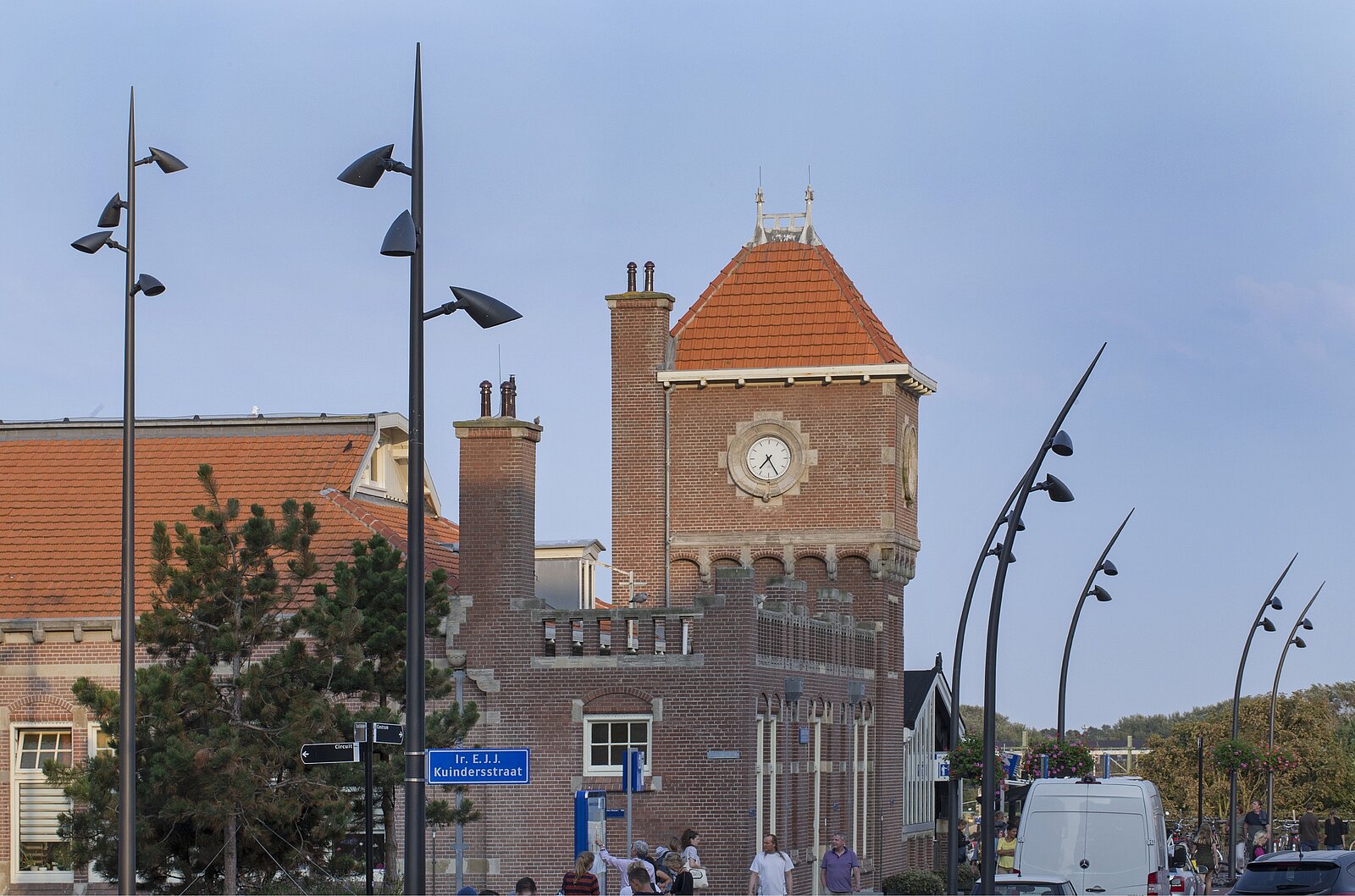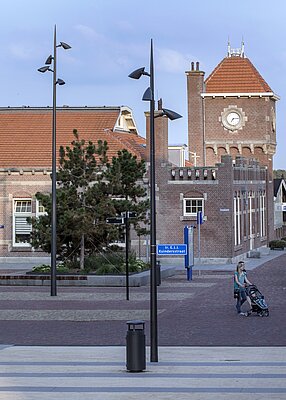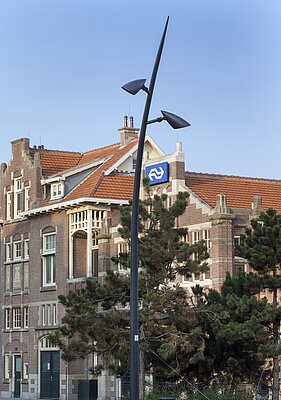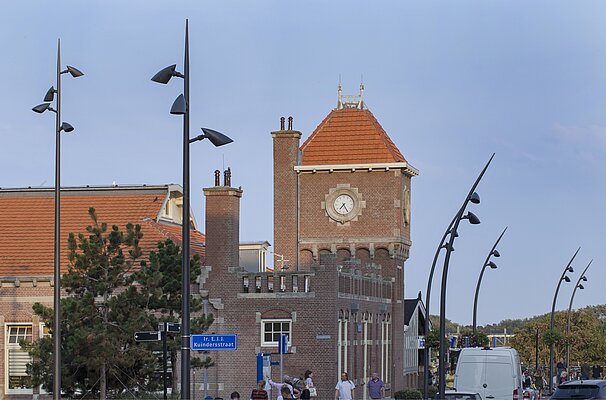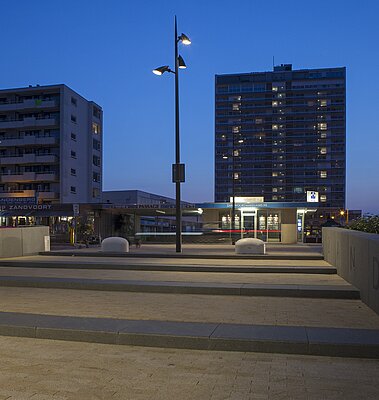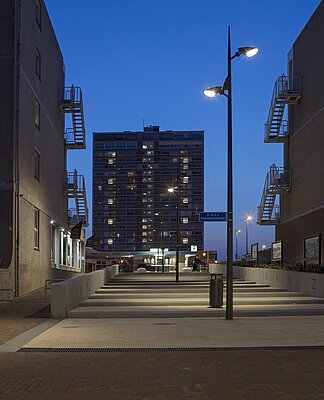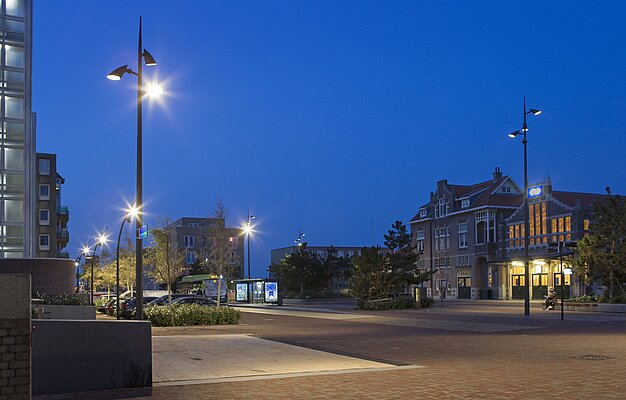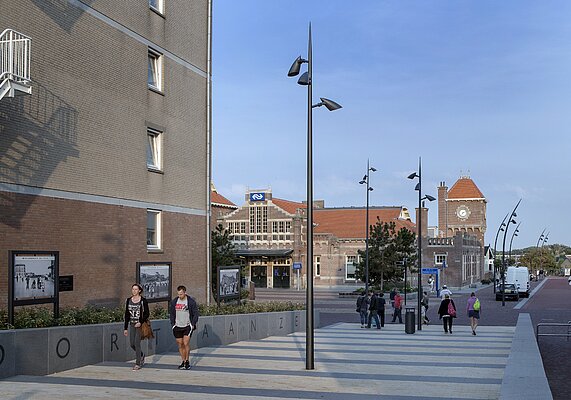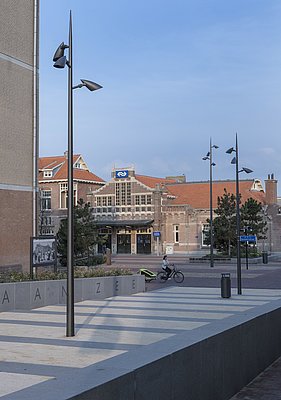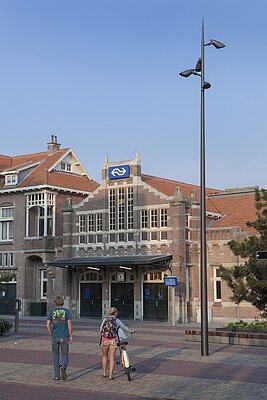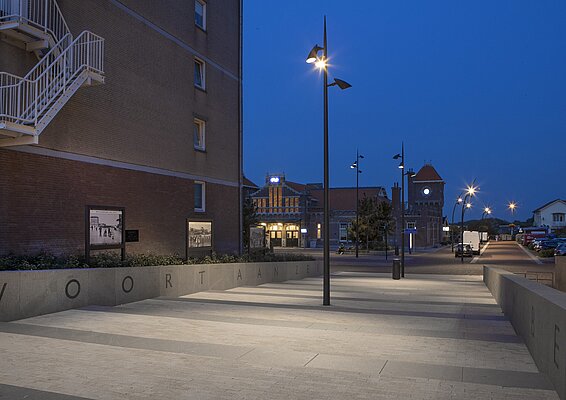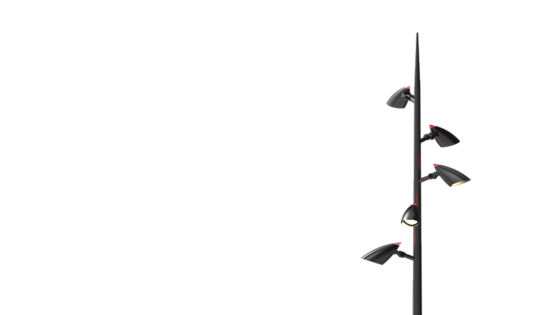Picturesquely located on the Dutch west coast, the municipality of Zandvoort aan Zee (North Holland) is referred to by everyone as 'Amsterdam Beach' – a nickname that alludes to the beautiful white sandy beach as well as the metropolis of Amsterdam, which is just half an hour away and can be easily reached by rail.
Bathing paradise at the gates of Amsterdam
The Netherlands' oldest seaside resort is extremely popular with visitors and families throughout the year, especially those from the capital region. Many travel by train and spend their holidays or short breaks on the extensive North Sea beach, which is only 200 meters from the train station.
In order to make the stay for passengers arriving by train a very special experience from the very beginning, the municipality has recently begun to redesign, landscape and illuminate the route between the station and the beach. Attractive ARINI luminaires from Hess, in different designs, ensure sensational accents both by day and night.
© MTD Landschaftsarchitekten
New calling card for a resort rich in tradition
Guests are to feel comfortable and welcome upon arrival
The redevelopment of the route heavily frequented by tourists is integrated into the overall urban development project 'Entree Zandvoort'. The guiding principle of the comprehensive revitalization is the strengthening of the identity of Zandvoort, as well as improving the quality of life in the public area between the train station and the beach in order to make it come alive for visitors as a place to meet, linger and stroll.
One of the first and central building blocks of the project is the station forecourt and its connection, via the pedestrian walkway 'Koper Passerel', to the neighbouring Palace area, all important stations on the way to the beach boulevard.
"We want the visitors, who are primarily from Amsterdam, to enjoy all the beauty of the coast. For the city, Zandvoort is the seaside resort best reached by public transport. The upgrading of the station environment is to contribute to a good first impression of Zandvoort", says deputy district governor of the province of North Holland Joke Geldhof, summing up.
The upgrading of the existing local area and the clear structuring of the space between the train station and the beach are also economically stimulating, bringing life to the exposed coastal location with hotels and a wide range of gastronomical, retail and wellness offers.
Design of open space focuses on attention-grabbing details
The landscape architectural design for the station forecourt and the 'Koper Passerel' was created by the planning office MTD landscape architects from 's-Hertogenbosch. Based on the spatial conditions and the history of the location, it was possible to give the station forecourt and the 'Koper Passerel' a strong local presence.
"The starting point for the considerations was focusing on the 'DNA' of the seaside resort of Zandvoort. For example, a special sand and water sculpture of yellow granite was created in the form of an oversized sandcastle, which today adorns the centre of the station forecourt", says designer Lisan van der Wielen of MTD landscape architects.
"The sculpture is a point of attraction on the plaza, encouraging people to linger.
They take pictures of it and thus capture a special moment as a reminder of their stay in Zandvoort", she continues.
Several slightly elevated green islands provide for a high quality of stay and a feel-good atmosphere. Planted with shrubs and shady black pines, they invite visitors to linger with stepped granite borders and seats made of jatoba wood.
The successful fusion of past and present is also expressed along the pedestrian path 'Koper Passerel': Historical pictures were placed here that capture the 190-year-old tradition of bathing culture at Zandvoort.
The lighting concept with ARINI luminaires from Hess also fits into the series of carefully selected and identity-enhancing design highlights.
"The sculpture is a point of attraction on the plaza, encouraging people to linger. They take pictures of it and thus capture a special moment as a reminder of their stay in Zandvoort"
Impressive lighting solution with expressive ARINI luminaires from Hess
ARINI: Design and multifunctionality
For plaza and footpath lighting, the planners favoured a lighting system that meets both high design requirements and simultaneously satisfies various lighting requirements at different locations.
"Because of its exceptional design and the versatile mast variants, we chose the ARINI line from Hess. Particularly attractive is the possibility to supplement the lighting with additional functions such as speakers, cameras and Wi-Fi", says Lisan van der Wielen.
The focus is currently on the lighting. The ARINI luminaires were equipped with LED modules in light colour 3000K as well as a previously inactivated DALI interface for automatic lighting control.
The light system impressed with its expressive design, the diversity in terms of the height and shape of the design masts and the variable number of ARINI heads to be mounted. Thanks to their attractive appearance, the ARINI luminaires contribute a visual highlight during the daytime – and provide a unique lighting atmosphere during the evening and night hours. In addition, due to their multifunctionality, the ARINI is a luminaire system that is already prepared for the demands of the future today.
Mast variants chosen specifically for the location
Especially for illuminating the station forecourt, taller masts with several light units of varying heights were required.
"The main idea of the lighting concept is to emphasise central elements such as the sandcastle in the middle of the plaza and the individual groups of trees with targeted lighting while at the same time ensuring homogeneous illumination of the entire surface of the plaza", explains the designer.
Four 10.7-metre-high, tapered ARINI masts (version ARINI N) with four differently positioned ARINI heads were installed to meet these requirements.
Other requirements are met by the four ARINI masts on the 'Koper Passerel': Equipped with a mast height of 7.70 meters and three luminaire heads, they ensure a consistently high illumination quality with rotationally symmetrical light distribution on the pedestrian walkway.
Another 13 curved ARINI masts (variant ARINI G) in a special version, with a height of 7 meters and two heads, evenly illuminate the carparks and pavements around the station building. What makes them unique: The bending radius of the masts, as well as the top spike, are project-specific adaptations.
"Thanks to the many design possibilities, we were able to design and equip the required ARINI masts to fit exactly", says Lisan van der Wielen, describing the advantages of the flexible ARINI system.
Sea air-resistant paint protects against the weather
Due to the coastal location, a pronounced maritime climate with a high content of sea salt in the air prevails in Zandvoort. "The sea breeze would severely damage ordinary paintwork, so the ARINI lights come with a paint finish resistant to sea air", says van der Wielen.
The special coating in the colour 'Diamond Soft-Glimmer Graphite-Dark' reliably protects against the weather and gives the distinctive luminaires an appearance that is always attractive and high quality.
Project information
- Town / Country
- Zandvoort, Netherlands
- Lighting design
- Industrielicht
- Builder
- Municipality of Zandvoort
- Landscape architect
- MTD Landschaftsarchitekten

